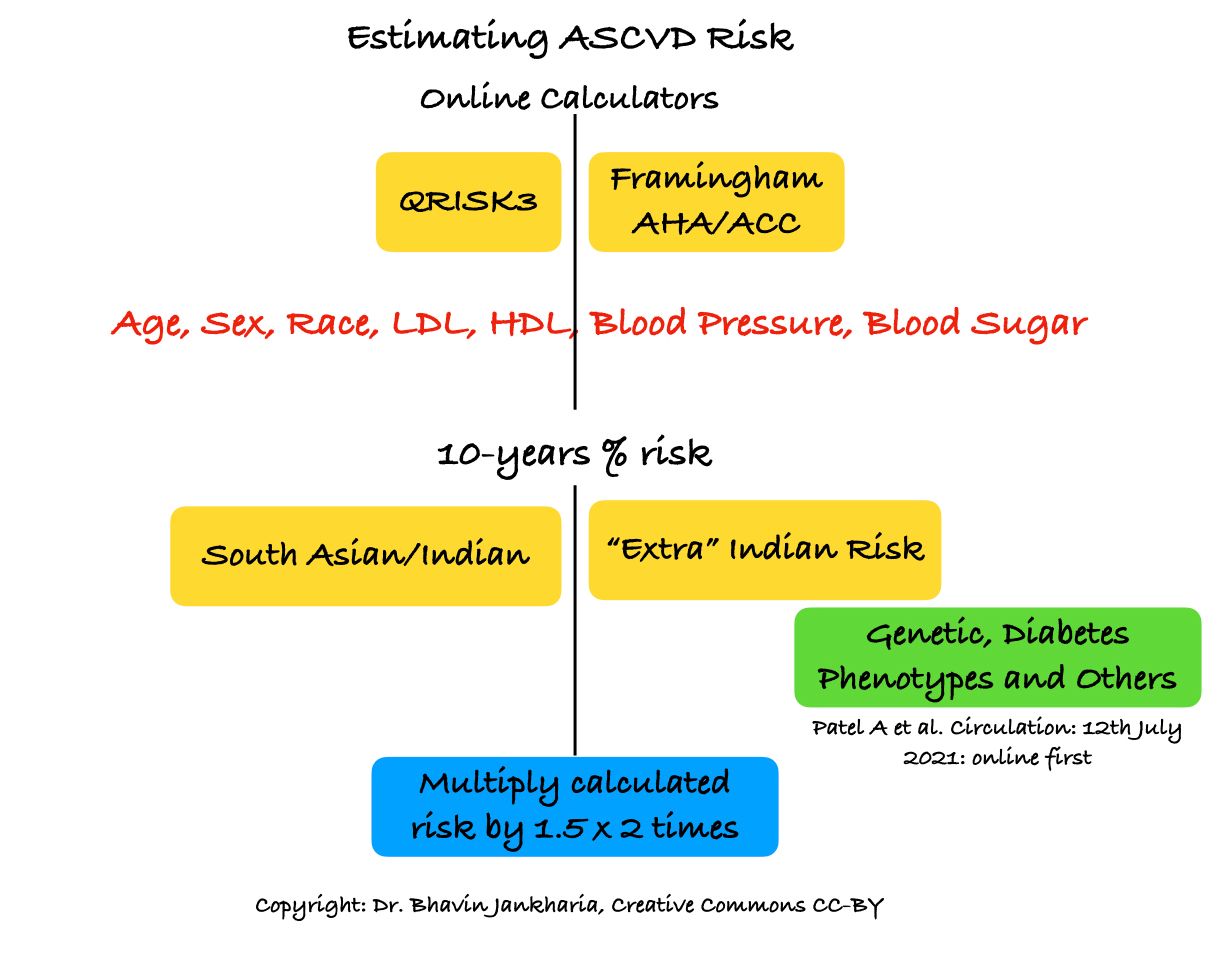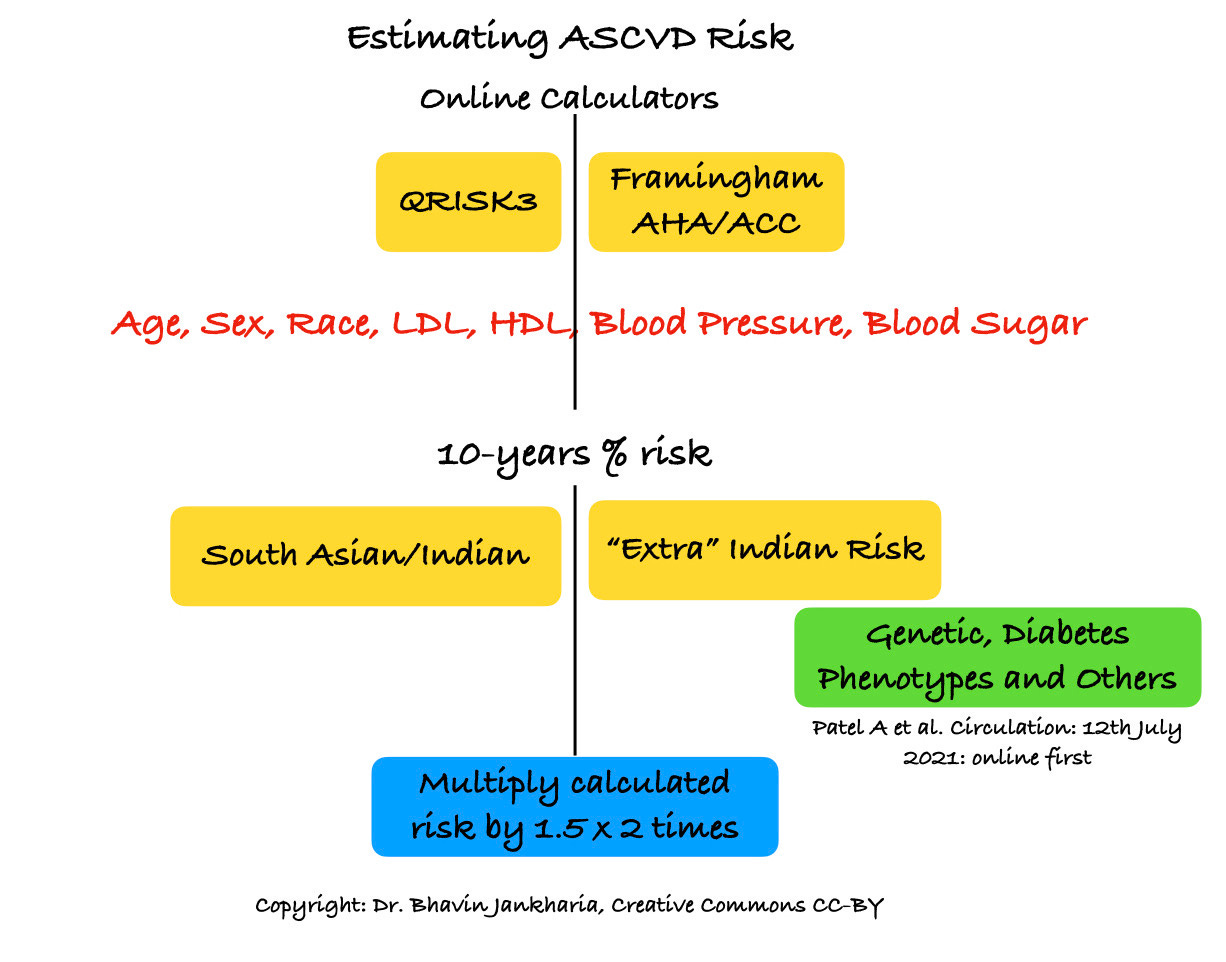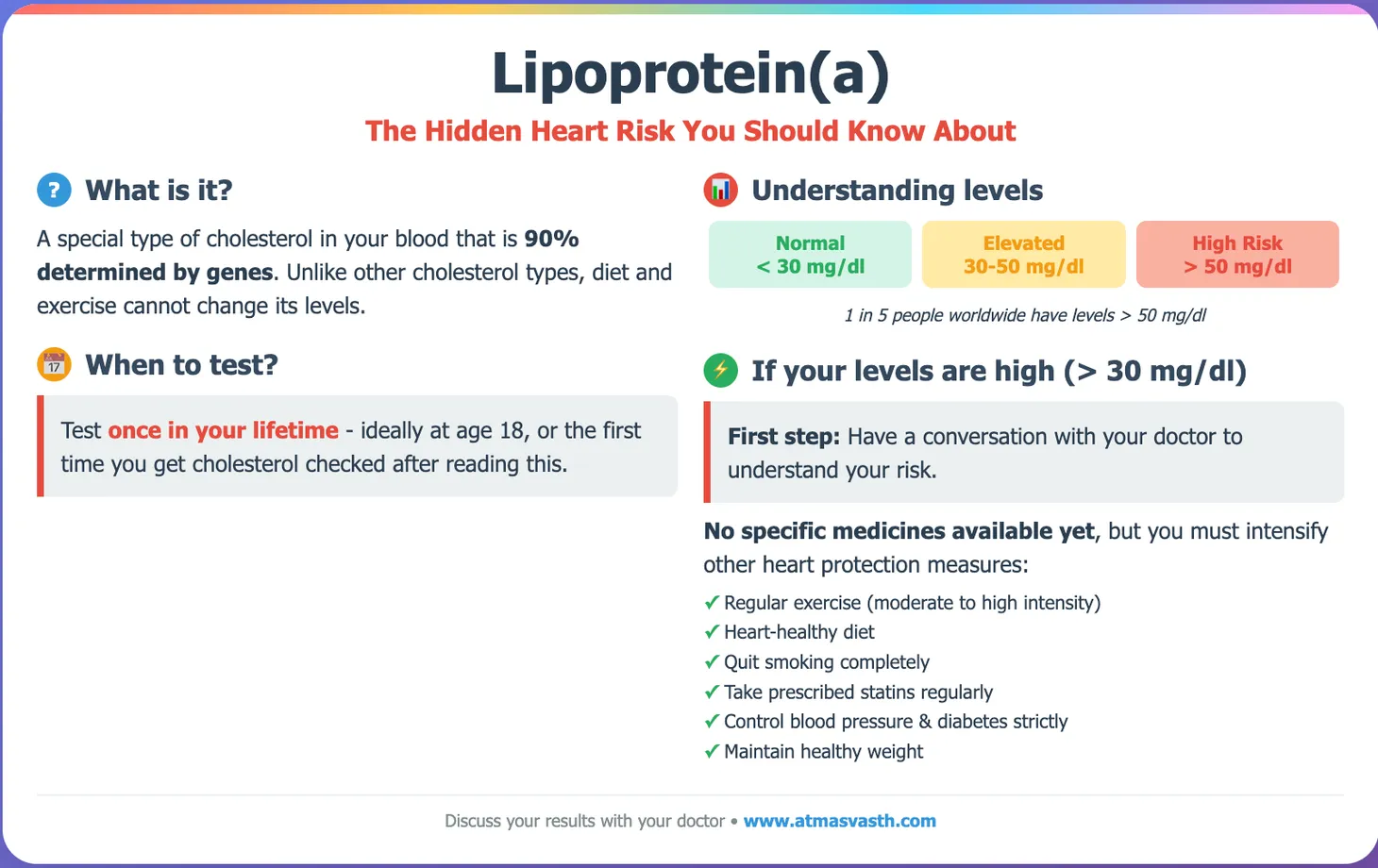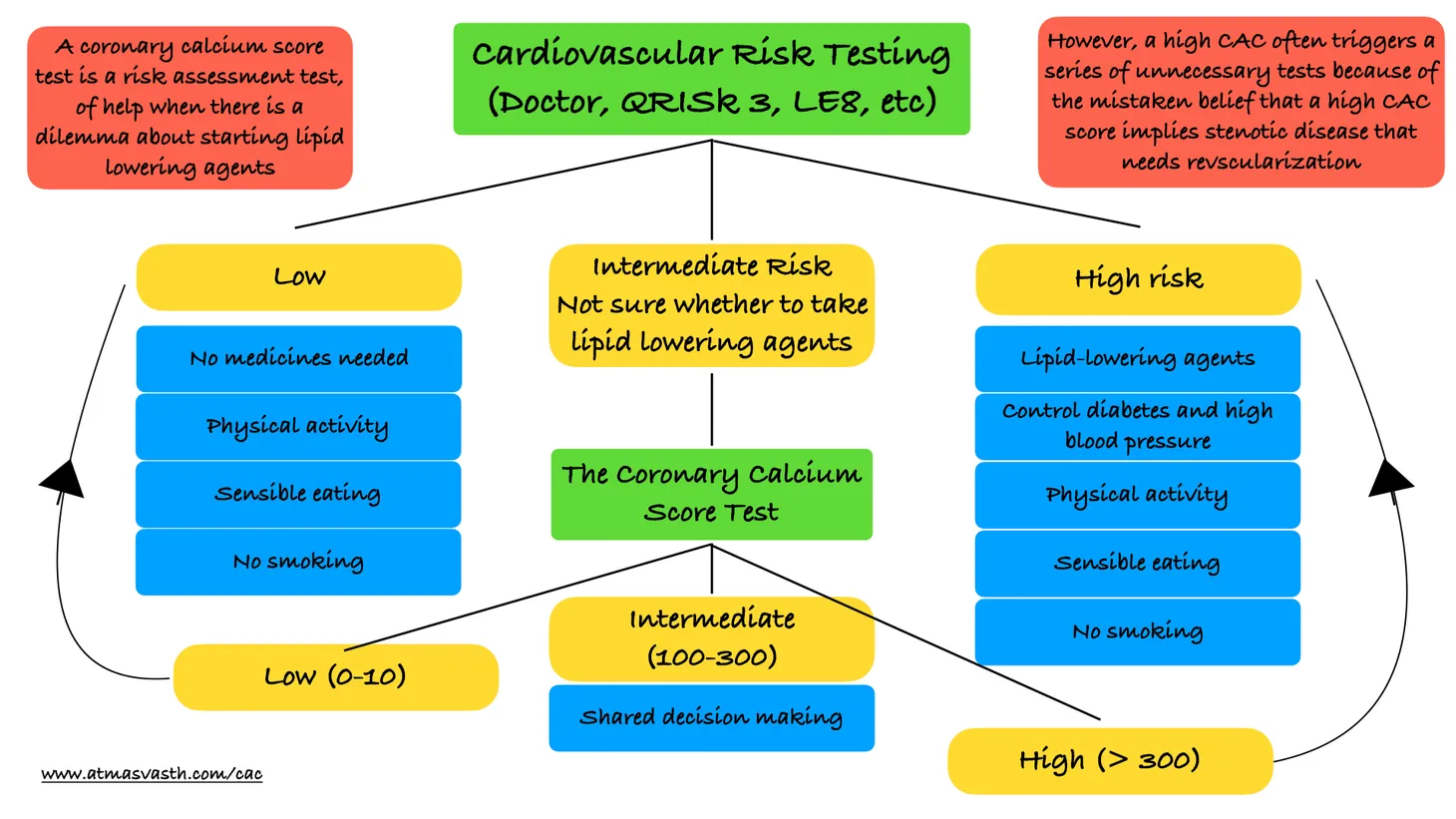The Extra "Indian" Cardiovascular Risk
South Asians and Indians have an added risk of cardiovascular disease and death over traditional risk factors

For some time now, researchers and clinicians have been talking about the presence of an extra “Indian” risk for cardiovascular disease and deaths, over and above traditional risk factors and greater than the risk of non-Indians living in the same environment.
The MASALA study [1] in the past has found that there are significant differences in cardiovascular risk between South Asians and other populations living in the United States as have similar studies in other countries [2].
A new paper published on 12th July in Circulation [3] adds to the data on this subject. Aniruddh Patel and his colleagues analysed the UK Biobank cohort, and compared 8124 middle-aged individuals of South Asian ancestry to 449,349 people of European ancestry, for cardiovascular risk and events. A two-fold risk was seen at the end of 11 years in the South Asian population. More importantly, this risk was not captured by the AHA/ACC and Qrisk3 calculators, which are the best risk calculators available currently for Indians and South Asians.
This post is free to read, but you will need to subscribe with your email ID to read the rest of the post.

An accompanying editorial by Drs. Kandula and Kanaya [4] explains that most of the risk difference between South Asian and other populations is due to an increase in the traditional risk factors of hypertension, diabetes and central obesity among South Asians/Indians. And we know that cardiovascular disease is the biggest killer in India, far outstripping any other cause, hypertension leading the list of cardiovascular risk etiologies.
Drs. Kandula and Kanaya then go on to say that this new UK Biobank study along with the MASALA study and others, adds to the increasing understanding that over and above the traditional risk factors, there is a separate, extra “South Asian” risk. Whether this increased risk is due to differences in diabetes phenotypes as has been suggested in a recent paper [5] that has shown two subgroups of diabetes that are unique to the Indian subcontinent or is genetic or due to factors as yet unknown, or a combination, is uncertain.
What is your matka here?
Just being “Indian”, whether you live in India or in any other part of the World, seems to imply an increased risk for cardiovascular disease. This means that after we measure our risk using traditional methods or the AHA/ACC or Qrisk3 calculators, we may want to multiply that risk by a factor of 1.5 or 2 and then be that much more aggressive about reducing that risk, whether it involves physical activity, sensible eating, statins, aspirin, or tighter control of hypertension and diabetes, if present.
Footnotes
1. Kanaya AM, Kandula NR, Ewing SK, Herrington D, Liu K, Blaha MJ, Srivastava S, Dave SS, Budoff MJ. Comparing coronary artery calcium among U.S. South Asians with four racial/ethnic groups: the MASALA and MESA studies. Atherosclerosis. 2014; 234:102–107
2. Satish P, Vela E, Bilal U et al. Burden of cardiovascular risk factors and disease in five Asian groups in Catalonia: a disaggregated, population-based analysis of 121 000 first-generation Asian immigrants. Eur J Prev Cardiol. 2021 May 10:zwab074. doi: 10.1093/eurjpc/zwab074. Epub ahead of print. PMID: 33969397.
3. Patel AP, Wang M, Kartoun U, Ng K, Khera AV. Quantifying and Understanding the Higher Risk of Atherosclerotic Cardiovascular Disease Among South Asian Individuals: Results From the UK Biobank Prospective Cohort Study. Circulation. 2021 Jul 12. doi: 10.1161/CIRCULATIONAHA.120.052430. Epub ahead of print. PMID: 34247495.
4. Kandula NR, Kanaya AM. The South Asian Enigma: Solving a Puzzle of Global Importance. Circulation. 2021 Jul 12. doi: 10.1161/CIRCULATIONAHA.121.055159. Epub ahead of print. PMID: 34247493.
5. Anjana RM, Baskar V, Nair ATN, Jebarani S, Siddiqui MK, Pradeepa R, Unnikrishnan R, Palmer C, Pearson E, Mohan V. Novel subgroups of type 2 diabetes and their association with microvascular outcomes in an Asian Indian population: a data-driven cluster analysis: the INSPIRED study. BMJ Open Diabetes Res Care. 2020 Aug;8(1):e001506. doi: 10.1136/bmjdrc-2020-001506. PMID: 32816869; PMCID: PMC7437708.
Atmasvasth Newsletter
Join the newsletter to receive the latest updates in your inbox.


